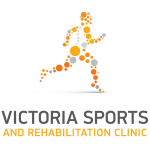Acute low back pain is one of the most common conditions that we see at the clinic. Often, it is the first time the patient has experienced pain in their lower back at this intensity and it can be frightening and concerning. Sometimes all we want to do is find a comfortable position and stay there (and secretly just hope it goes away). But is bed rest really a good idea for acute low back pain? The simplest way to answer this: No.
Movement, movement, movement! It is the absolute best thing for our backs when they have flare ups and mechanical style pains. Our bodies, especially our spines, are designed to move, muscles are designed to contract and relax, and all of this can be used to our advantage to help calm an area and desentize the nervous system. Laying still in bed can reinforce bad postures and positions and allow the muscles to tighten up more leading to more spasm and pain. Recently in 2018, there was a systematic overview of 12 clinical practice guidelines for low back pain. It found 11 guidelines (92%) recommended avoiding bed rest for back pain altogether. This contradicts many old wives tales and the old school mentality of “lay on the ground for a week and don’t move”. In fact, if you stay still and don’t move it can actually make it a lot worse and lead to a much longer recovery time.
Moving and exercising while in pain is not always easy, and this is why speaking to your Osteo about the best and safest way to move is the most important. During your consultation, your Osteo will thoroughly assess you to determine what areas need to be stretched, mobilized and strengthened to best support your pain. However generally speaking, for the majority of acute back pain, these tips can be useful:
- Find any range of motion in the low back which is pain free. Use this as a mobilization style exercise and repeat it 5-6 times. This might be bending side to side, forward or back. It doesn’t have to be a big range of motion!
- Add small walks throughout the day. A walk up and down your hallway or around the garden can be great every half hour or so to change postures and positions- it really doesn’t have to be huge.
- Use lots of heat packs and hot water bottles. The heat will encourage more blood flow to the area and help the tissues relaxed. Some people find it helpful to tie the heat pack around their back or pelvis. Alternatively we sell heat packs at the clinic with velcro straps that prevent it from moving around.
- Wear supportive footwear when you are walking and stay close to home. It can be useful to walk to the end of the street and back, then if everything is ok continue a little further the next time.
- Try to sleep in whichever position is most comfortable. Many back pain sufferers find sleeping on their side with a pillow between their knees most supportive.
- Avoid exercises that flare up your back pain. This might include running, gym based exercise especially weights, and forcing movement to the end of range movements and pushing through pain.
- Avoid lying down/sitting down for long periods of time where possible. It is recommended to get up at least every 30-45 minutes and move your body even without pain, so when you are in an acute phase this could be much more often.
So next time you experience pain please try these tips and call us for an appointment if you have any more questions! But remember laying on the couch all day is really not the best option!
